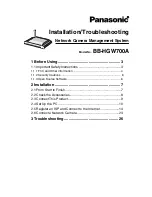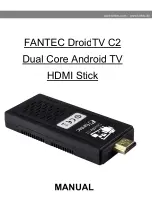
68
ASD-4
A.2 Operating the ASD-4
A.2.1 A
NSWERING
I
NCOMING
C
ALLS
When a call comes in and the ASD-4 is connected to a single extension, all of
the phones on the same line (except those connected to the TAD or PHONE
port) ring one time.
The ASD-4 answers the call on the first ring.
After the ASD-4
answers the call, it listens for any of these signals:
• a fax CalliNG (CNG) tone (see
Section 4.1.2
for more information)
• the FAX Access Code or MODEM Access Code (see
Sections 4.2.2
,
5.4.2
,
and
5.4.3
for more information about these)
• a reverse modem carrier
If the ASD-4 detects any of these signals, it automatically routes the call to the
selected port. If it
does not
detect a signal, it routes the call to its TAD and
PHONE ports. When the phone devices on the TAD and PHONE ports ring,
it means that the call is coming from one of these:
• a person wanting to talk to you
• a person sending a fax manually
• a fax machine that can’t produce CNG tones
If, after answering the call, you hear silence on the line, the call is probably
coming from a fax machine that doesn’t produce CNG tones.Transfer the call
to the FAX port by entering the appropriate access code ([1] [1] from a tone
phone or [3] from a rotary/pulse-dialing phone). You can use the same
procedure to transfer a call fwhen the caller vebally requests the fax machine.
For more information on answering incoming calls, see
Section 4.2.2
.
A.2.2 U
SING THE
ASD-4
WITH A
TAD (A
NSWERING
M
ACHINE
)
When an answering machine on the ASD-4’s TAD port answers a call, the
caller can not only leave a voice message, he or she can also transfer the call
to the FAX or MODEM port. We recommend that you use your answering
machine’s greeting announcement to provide callers with instructions for
transferring their calls. Here’s a sample announcement that you might want
to use:
Содержание ASD-4
Страница 83: ...NOTES ...










































